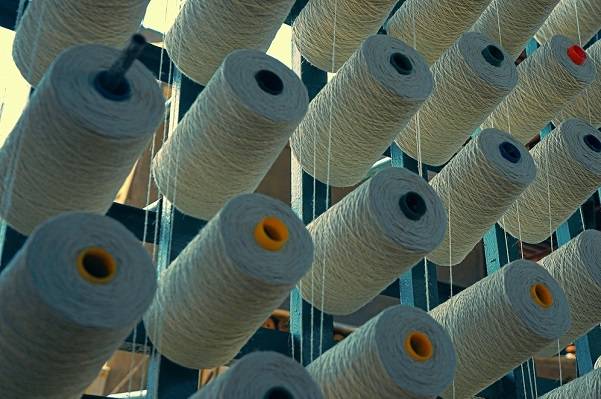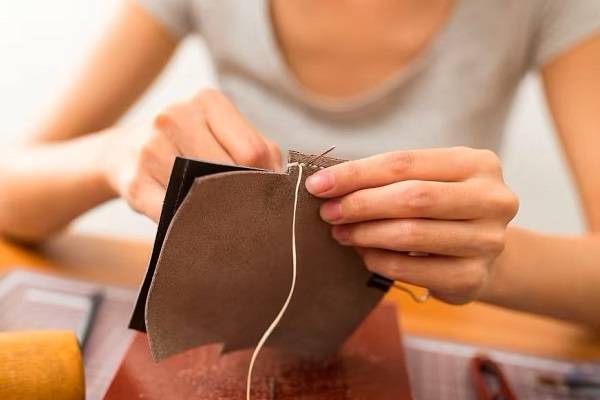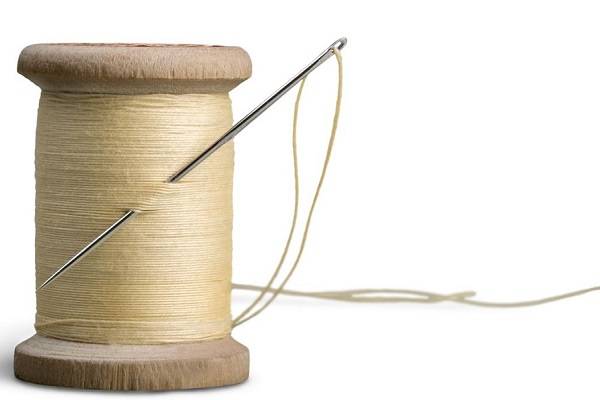Flax Strick Guide: How to Use Linen Fiber for Spinning, Weaving & Crafts
Explore the Uses, Qualities, and Crafting Tips for Flax Strick Fiber

Innovation & Quality
Developing and supplying premium-quality, sustainably grown, consumer products
100% Natural
Organically Grown and Ethically Sourced
hemp and other natural fiber products
Shipping
We offer fast shipping
Your order out within 1-3 days
Wholesale
Visit our wholesale portal to register or login to your account
Flax strick is crucial material for fiber artists who are looking to work with linen yarn. These long fibers are traditionally used to make fine linen thread or specialty yarns by spinning. Spinning your own yarn gives you a chance to create unique threads that can’t be bought in stores. Flax strick is used in other crafts, too, including weaving, paper making, blending, and doll making.
Shop Premium Flax Strick at Hemptique
At Hemptique, we are committed to providing sustainable fiber supplies for artisans who care about the environment. Our flax strick is sourced responsibly, ensuring that you get high-quality, natural fibers for your projects while supporting eco-conscious crafting and preserving our environment. Whether you’re looking to spin, weave, knit, crochet, or simply experiment with fiber arts, Hemptique’s High-grade flax (linen) strick offers a versatile and sustainable option for your creative needs. This long line bast fiber is grown and processed in Egypt and features exceptional strength, durability, fabric softness and beautiful drape. Sold in 7oz (200g) and 17oz (500g) bundles, it can be used for weaving into fabrics, crocheting/knitting into garments, lace, or home textiles, handmaking paper, and many other uses. For more information, give us a call on (760) 602-4864 ext. 403 and 405, apply for a wholesale account, or send a bulk/large quantity request.
What is Flax Strick & How Is It Different from Raw Flax?
Turning flax plant into fabric is a very complex and long process that involves separating the fiber from the woody stem (retting), cleaning the extracted fibers, straightening long fibers, combing, and drawing through sharp tines, resulting in soft, luminous grey-beige fibers. These long line fibers, twisted into a bundle and ready to be converted into sliver for spinning, are called a strick of flax.
How to Recognize Good Vs Poor Quality Fiber?
To help you find high-quality linen strick easily, here’s a few tips on what features to look for and which ones to avoid. Quality linen features:
Long, even, continuous fibers
Natural luster
A smooth feel, no excessive roughness
Consistent texture, without choppy strands
No impurities, woody residues or broken fibers
Linen Strick Uses
A bundle of long fibers ready to be spun, also known as linen strick, is mainly used for spinning yarn and weaving fabrics, but it is also used in historical re-enactments and other fiber crafts.
How it's used:
How it's used:
- Spinning - It's a very popular material for spinning into linen yarn. The bast fiber is dampened during careful drafting and spinning to improve easy of handling and to reduce breakage. If you spin in finely, you'll have beautiful lace for knitting or crocheting table clothes, curtains, or macrame accessories (jewelry, decorations, home textiles).
- Weaving - The spun yarn can be woven into strong, breathable, thermo-regulating fabrics or fine textiles.
- Handmade paper - Flax fibers are used to add strength to high-end handmade paper, resulting in strong, long-lasting sheets. Flax-based paper is used for historical preservation of archival documentation and making high-quality custom stationery (luxury paper, art paper).
Historical re-enactment - In historical re-enactments they are used to mimic traditional linen production process.
- Other crafts – Unspun strick of linen can also be used for other fiber crafts, such as doll making, blending, and felting.
Preparing Strick of Flax for Spinning
Spinning into linen thread or yarn can be done either by hand (using a drop spindle) or by spinning wheel. If you are a beginner, lightly moisten the fibers before you start to make the whole process quicker and easier.
- Soften the ends of the bundle by soaking them in water for a few minutes
- Separate small sections to ensure consistency
- Use distaff to keep fibers aligned.

Dyeing With Natural Dyes
Flax absorbs dye quite well, but to ensure even coverage and quality dyeing with naturally-based dyes, it must be properly prepared prior to coloring to allow for.
Before you start dyeing, you must mordant the strick. The process of mordanting involves treating linen strick with mordant solutions to create a chemical bond that improves dye adherence, as well as color fastness and durability. Typical mordants are alums, tannins, and iron-based salts. Start by cleaning the strick. After it is properly cleaned from impurities, applying the mordant and gently heat it so that the fibers can better absorb it. Finally, rinse and thoroughly dry.
Natural dyes, such as madder (for reds), woad (for blues), walnut husks (for browns and golds), and longwood (for purples), work beautifully on linen.
Blending With Other Fibers
If you want to create unique yarns with interesting textures and custom colors, you can blend different fibers together while spinning. With this technique, you can create various special effects, such as ombre yarn or sparkly yarn. Keep in mind that blending takes some practice, so it’s best to start simple and have patience. Begin by blending two different colors of the same type of fiber. Once you get a feel for the fiber, move on to other materials, but be aware that some fibers may separate or bunch up while spinning.
- Blending before spinning – For this technique, you can use a blending board, a hackle, a hand carder, or stacking without tools. Start by stacking the fiber on a board and pulling the fibers from bottom to top. The idea is to shuffle and pull until they are well mixed. To compress the material down, use either a special brush or a paint brush. Use two dowels to get the yarn off the board and into a rolag, by rolling it up from the bottom.
- Blending while spinning (plying) – You can blend fibers at the wheel by plying two single strands together. This technique involves overlapping a small amount of new fiber with the end of the current one, while gently pinching and drafting.
Flax vs. Hemp Comparison
While both are very strong fibers sourced from plants, there are slight differences that set hemp and linen apart. Flax is typically used for making finer fabrics, while hemp is used for making textiles that require higher durability and strength.
| Flax (linen) | Hemp | |
|---|---|---|
| Strength | Strong | Very strong |
| Durability | Durable | Very durable |
| Softness | Soft & smooth | Slightly coarser |
| Water resistance | Absorbing moisture | Moisture-wicking |
| Eco-friendliness | Biodegradable & sustainable | Biodegradable & sustainable |
| Best used for | Finer fabrics (bedding, table linens, clothing, etc.) | Durable textiles (clothing, canvas, ropes, etc.) |
Tips on Caring & Storing Flax Fiber
If you want to maintain the quality of unspun flax fiber, you must keep it properly stored. Like other natural fibers, linen can be degraded by humidity, mold, and mildew. That’s why it is recommended to store in an airtight container, in a cool, dry, well-ventilated space, away from sunlight or heat sources. This way, you will prevent damage caused by pests and moisture and preserve flax fiber strength, longevity, and color.
Storing in airtight containers also protects from odors. If you don’t have an airtight container, use a sealed bag or box, made from breathable materials that allow air circulation.
Additional tips:
- Regularly inspect for signs of pests (moths, insects)
- Keep storage area clean, free from debris and contaminants
- Gently handle unspun linen. Avoid excessive rubbing or crushing, in order not to damage the fibers.
- Consider using a distaff to hold the fibers
Conclusion: Why Flax Strick Belongs in Your Craft Room
Linen strick is perfect fiber craft supply for artists who appreciate durability and natural beauty of linen. With proper preparation and adequate technique, it can be transformed into unique yarns and threads used to weave beautiful textiles or knit and crochet gorgeous handmade pieces. Explore the possibilities with Hemptique’s sustainable & biodegradable linen stricks and unleash your creativity in your next spinning project!
Browse Our Knowledge Base
If you are into crafting and need ideas and inspiration, or if you want to broaden your knowledge, and improve your skills further, check out our Knowledge base. It’s a creative resource collection of techniques, beginner guides, and project ideas created to help all artisans broaden their knowledge and improve their skills by providing a comprehensive digital library. If you are looking for information on supplies, tools, or step-by-step instructions for large or small projects, this is the place for you! We are on a mission to support crafting community by providing a selection of inspirational articles on a wide range of crafts including macrame, crocheting, knitting, string art, jewlery making, fiber supplies, and more. We want to encourage you on your journey and give you the tools to immerse in a craft you enjoy and express your creativity, imagination, and individuality.
Frequently Asked Questions
1. Can I use flax stricks for felting?
Although flax lacks natural crimp, it can be blended with wool to achieve firm, structured felt. Some artisans use needle felting to incorporate linen into their fiber art pieces.
2. How can I prevent the fiber from becoming brittle?
If stored improperly, linen can become brittle and dry. In order to prevent this from happening, mist fiber with distilled water if you notice that the fibers are overly dry Gently flex and roll to restore flexibility. Avoid excessive heat or direct sunlight exposure.
3. Is there a way to soften linen yarn after spinning?
When first spun, linen is stiff, but it softens with handling. To soften and relax the fibers, you can soak the finished yarn in boiled water with a small amount of baking soda. It will further soften with repeated washing and ironing. Alternatively, you can use a traditional technique of beating the fabric with wooden mallets to accelerate softening.
4. What makes linen scratchy?
Mechanically processed linen tends to be more stiff than hand-processed linen. The length of fiber can also impact the scratchiness – the longer the fiber, the softer it will feel. Finally, fabric finishes like enzyme washes and stone-washing can significantly improve softness.
5. Is flax biodegradable?
Yes! Flax is 100% biodegradable. Depending on environmental conditions, it takes from a few weeks to a year for it to fully decompose. When its untreated with dyes, chemicals, and other fibers, it can quickly decompose, often in as little as several weeks. This rapid decomposition minimizes waste and environmental impact. If you want to speed up decomposition, you can cut linen fabric into smaller pieces.






